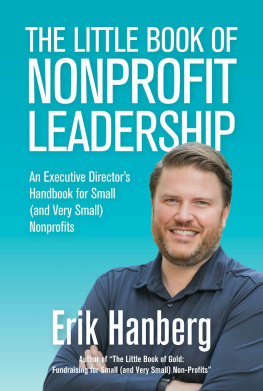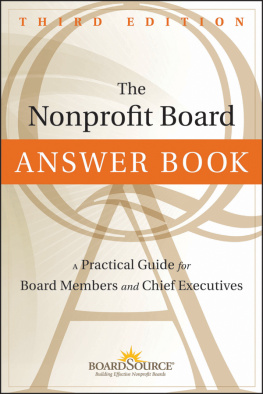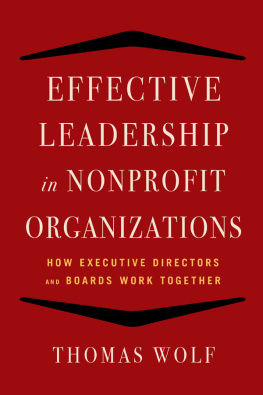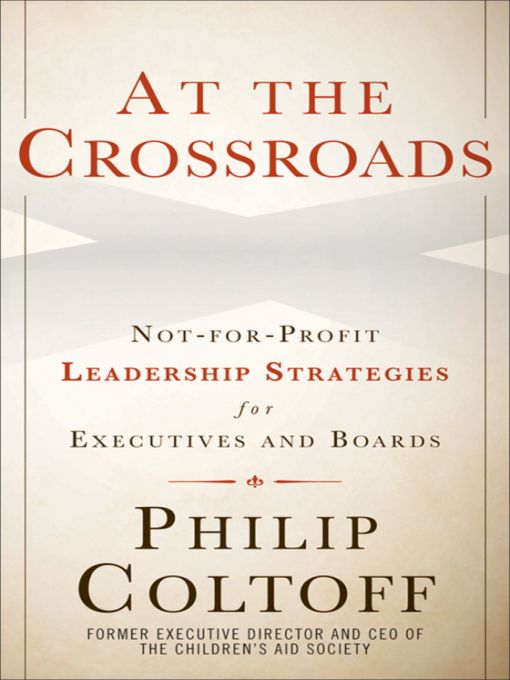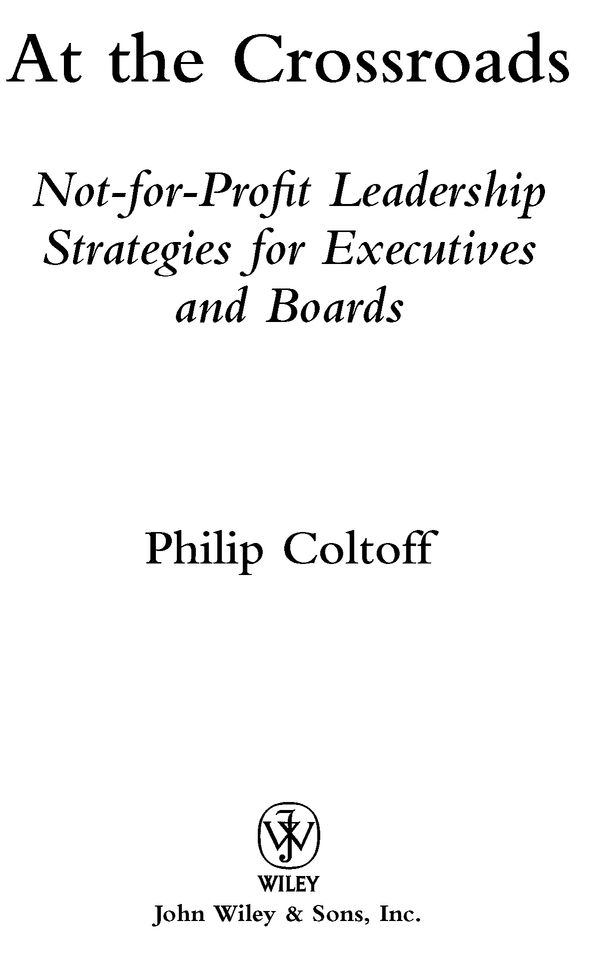Table of Contents
To Lynn Harman, who served many roles in the course of the writing of this bookloving wife, severe but constructive critic, in-house editor, and professional ego-booster.
Foreword
This remarkable guide comes at a providential moment. Even as the American economy is groping slowly toward recovery, the great recession continues to exact painful costs, most of all for people in despair. For nonprofit service agencies, this is a time of triple trouble.
For one thing, the needs of the neediest have grown more acute. Hunger agencies say they are feeding 20 to 25 percent more people. Unemployment and underemployment afflict one of every six Americans. Millions of people, victimized by subprime deception and fraud, stand to lose their homes.
Meanwhile, the ability of nonprofit organizations to serve people in distress has declined sharply. At the New York Times Neediest Cases Fund, we experienced a drop of 5 percent in 2009 and a further drop of 9 percent in 2010, even though the number of donors was nearly flat. Other agencies report that their contributions are down as much as 25 percent.
These losses mirror the third source of trouble. Many nonprofits have relied on the annual income from endowments. Now, endowment gifts have become rare and existing endowments have shrunk drastically, chopping into the investment income that agencies have relied on to meet their operating expenses.
This turmoil and, on occasion, tragedy exposes a powerful need. All social services agencies, even those with experienced leaders, are driven to review and improve every operation, to sharpen every tool. This book, from the widely admired and longtime head of a famous agency, offers a series of wise lessons for all nonprofits, from new start-ups to established institutions.
Chapters 7 and 8 particularly warrant their close attention for they present two lessons that to me are misunderstood or poorly understood. One concerns advocacy. In Chapter 7, the author explains that yes, nonprofits are forbidden as a condition of retaining their tax-exempt status to support political candidates. At the same time, however, they are free to take public positions, even on the most controversial issues. Indeed, as he writes, they have a duty to take such positions, as a logical extension of the organizations mission. The larger mistake is when an agency does not inform the community of the position that it is advocating.
Chapter 8 offers the second lesson, which, equally laudable, concerns the difference between management, as exacting and important as that is, and leadership. The key is vision and the author is at his best explaining why thats not just defining a dream but making it a driving force.
Phil Coltoff did that at the Childrens Aid Society over four decades. In the words that follow, he turns that experience into a gift.
Jack Rosenthal, Senior Fellow,
The Atlantic Philanthropies, and former President,
The New York Times Company Foundation
Preface
Todays not-for-profit social services organizations face a challenging environment. Revenue sources are strained due to the economic recession and associated blows to state tax revenue and budgets. Compliance activities, including fiscal compliance, overdue attention to conflicts of financial interest, client confidentiality, and other regulations are required of todays not-for-profits, but seldom funded. The philanthropic public has been well tutored to equate low administrative overhead with quality in social services organizations. At the same time, the people who are served by not-for-profits are in great need, and are themselves negatively affected by the global recession and economic restructuring. Todays not-for-profits are expected to do more with less, and at the same time, to run like model businesses. This is the challenging context that Phil Coltoff paints for todays not-for-profits.
In this book, Coltoff, one of the nations most respected and longest-leading not-for-profit CEOs, shares the wisdom that he developed over decades as he led the nations oldest childrens services agency, the Childrens Aid Society. Phil Coltoff s voice brings a balanced perspective, stressing leadership over technical challenges, and person-centeredness in the whole agency, from the board to the staff to the clients.
This books contents provide a comprehensive analysis of the contemporary context and resulting challenges for not-for-profits. In addition to thoughtful reflections on the roles of the CEO in governance, board relationships, and roles and responsibilities including fiscal management, human resources, program development, and fundraising, Phil Coltoff pays careful attention to topics less frequently touched upon in not-for-profit management and leadership texts. He addresses the central role of public image and visibility of the not-for-profit to its multiple constituencies, including its funders, public and private, the community it serves, its clients, and its internal image. He reflects on the history of social services and the not-for-profit in America. He provides an insightful analysis of transformational leadership, including the central role of vision, strategy, and values. The latter part of the book addresses the cusp of tomorrows challenges for not-for-profits, including leading in an era of technology, building the capacity for effective and responsible deployment of volunteers, the internationalization of social services in the context of globalization and shifting demographics, and finally, succession and retirement, one of the most critical organizational transitions for the CEO as well as for the organization.
Studies of social services show that we are about to enter an unprecedented phase of leadership transition with the retirement of the Baby Boom-generation CEOs. This book provides an outstanding resource to the aspiring generation of not-for-profit leaders. The wise master has spoken.
Lynn Videka, Professor and Dean,
Silver School of Social Work, New York University
Acknowledgments
Few books can be written without collaborators, many of whom play important roles and are often invisible. If writing a book were the equivalent of making a motion picture, the people whom I am referring to would be the stage manager, cinematographer, set decorator, costume designer, audiographer, musical director, and so forth. The music of a book requires this type of full ensemble to make it readable, let alone publishable.
In this spirit, I have many to thank. The first is the person to whom this book is dedicated, my wife, Lynn Harman. She truly was my in-house editor, spending hours on painstaking review, suggestions (sometimes made quite forcefully), editing, and proofreading. I cant imagine having been able to get through this work without her collaboration.
I thank the editors at John Wiley & Sons: Judy Howarth on copy and content and Susan McDermott on overall publication, cover, jacket, and everything else that falls in the category of publishing.
Thanks to my colleagues at New York Universitys Silver School of Social Work for their supportespecially Dean Lynn Videka for her manuscript review and penning the Preface; and Jack Rosenthal, former President of the New York Times Company Foundation and Pulitzer Prize-winning journalist, for his encouragement and suggestions and for writing the Foreword. Michael Stoller, executive director of the New York Human Services Council, a colleague and friend, served as a peer reader.






